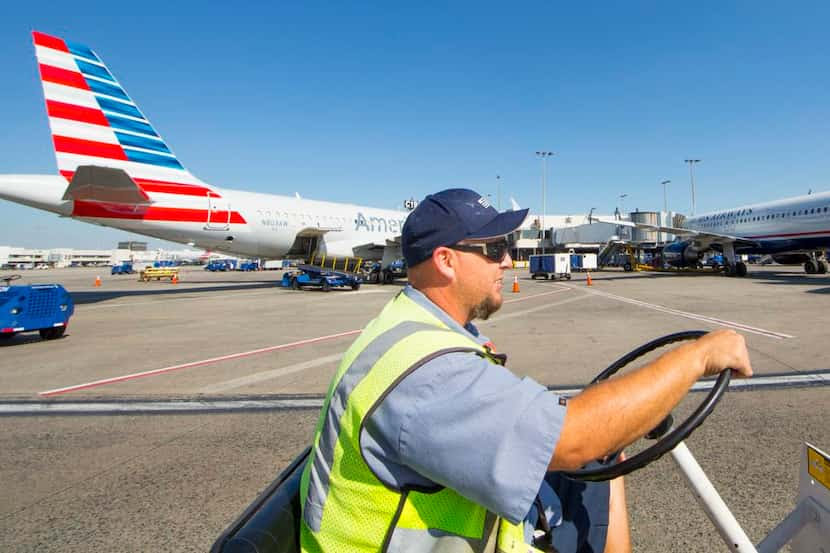American Airlines finally absorbs US Airways’ brand
American Airlines finally absorbs US Airways’ brand
American Airlines Finally Absorbs US Airways’ Brand: A Comprehensive Overview
The absorption of US Airways’ brand by American Airlines marked a significant milestone in the aviation industry, symbolizing the culmination of one of the most notable mergers in recent history. This event has far-reaching implications for both airlines, their employees, customers, and the broader market. This comprehensive analysis will delve into the historical context, the merger process, the challenges faced, and the ultimate outcomes and implications of American Airlines finally absorbing US Airways’ brand.
Historical Context
To understand the significance of this event, it is essential to explore the histories of both airlines. American Airlines, founded in 1930, has grown into one of the largest airlines in the world, renowned for its extensive domestic and international network. US Airways, originally established as All American Aviation in 1939, also developed a robust presence in the U.S. aviation market, particularly after acquiring Pacific Southwest Airlines (PSA) and Piedmont Airlines in the 1980s.
The merger between American Airlines and US Airways was announced in February 2013 and officially closed on December 9, 2013. The combined entity aimed to create the world’s largest airline, leveraging the strengths and networks of both carriers. However, the integration process was complex and lengthy, with the final absorption of US Airways’ brand into American Airlines occurring only years later.
The Merger Process
The merger process between American Airlines and US Airways was extensive and multifaceted, involving various stages of integration across different operational areas. Some key aspects of this process included:
- Regulatory Approvals: The merger required approval from several regulatory bodies, including the U.S. Department of Justice (DOJ) and the European Commission. Concerns about reduced competition and potential fare increases led to a settlement with the DOJ, which required the divestiture of slots and gates at several major airports.
-
Operational Integration: Merging the operations of two major airlines involved integrating fleets, flight schedules, reservation systems, and loyalty programs. The combined fleet comprised diverse aircraft types, necessitating harmonization of maintenance procedures and training programs.
-
Labor Integration: The merger impacted thousands of employees from both airlines, requiring negotiations with various labor unions to harmonize work rules, seniority lists, and benefits. Ensuring a smooth transition for employees was crucial for maintaining operational efficiency and morale.
-
Brand Integration: One of the most visible aspects of the merger was the integration of the US Airways brand into American Airlines. This involved rebranding aircraft, signage, uniforms, and marketing materials. The goal was to create a unified brand identity that reflected the combined strengths of both airlines.
Challenges Faced
The merger and subsequent absorption of US Airways’ brand were not without challenges. Some of the primary difficulties encountered included:
- Operational Disruptions: Integrating two large airlines inevitably led to operational disruptions, including flight delays and cancellations. These disruptions were often caused by issues such as technical glitches during the transition to a single reservation system or logistical challenges in fleet integration.
-
Labor Disputes: Harmonizing labor agreements and seniority lists proved to be contentious, with disputes arising between different employee groups. Ensuring fair treatment and maintaining employee morale required careful negotiation and compromise.
-
Customer Experience: Maintaining a consistent and high-quality customer experience during the transition was challenging. Differences in service standards, policies, and procedures between the two airlines had to be addressed to provide a seamless experience for passengers.
-
Cultural Integration: Merging the corporate cultures of two distinct airlines required effective leadership and communication. Building a cohesive and unified corporate culture was essential for achieving long-term success.
Outcomes and Implications
The final absorption of US Airways’ brand into American Airlines brought several outcomes and implications for the airline, its employees, customers, and the broader aviation industry.
- Market Position: The merger solidified American Airlines’ position as the largest airline in the world, with an extensive network of domestic and international routes. This enhanced market position allowed the airline to compete more effectively with other major carriers, including Delta Air Lines and United Airlines.
-
Operational Efficiency: Integrating the operations of both airlines led to improved operational efficiency, with streamlined processes and optimized use of resources. The combined fleet and network allowed for better capacity management and route planning, contributing to increased profitability.
-
Customer Experience: Despite initial challenges, the merger ultimately aimed to enhance the customer experience by offering a more extensive network, improved connectivity, and a unified loyalty program. The rebranding efforts helped create a cohesive and recognizable brand identity for American Airlines.
-
Employee Impact: The merger had significant implications for employees, with efforts made to harmonize work rules, benefits, and seniority lists. While the integration process involved challenges, it also provided opportunities for career growth and development within the larger combined entity.
-
Industry Impact: The merger between American Airlines and US Airways had a broader impact on the aviation industry, influencing competitive dynamics and prompting other airlines to consider consolidation strategies. The creation of a dominant player in the market also led to increased scrutiny from regulatory bodies regarding future mergers and acquisitions.
The final absorption of US Airways’ brand into American Airlines marked the end of a complex and transformative journey. The merger process, characterized by numerous challenges and significant efforts, ultimately resulted in the creation of the world’s largest airline. This event not only reshaped the landscape of the aviation industry but also highlighted the complexities and opportunities associated with airline consolidation. As American Airlines continues to navigate the evolving market, the successful integration of US Airways’ brand stands as a testament to the airline’s resilience and adaptability in the face of change.



